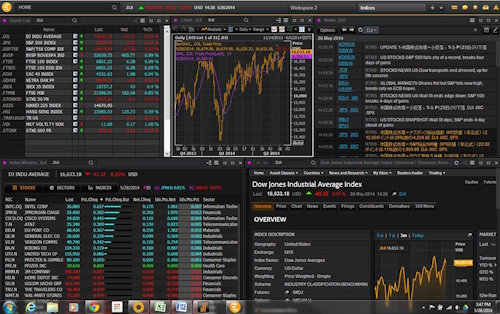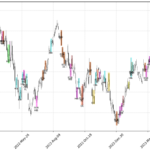
Although modern Contract for Difference (CFD) trading is often portrayed as a product of the digital age, the underlying concept—trading purely on the difference in price rather than taking ownership—can be traced back centuries. Financial instruments strikingly similar to modern CFDs were in use as early as the 1500s in Antwerp, Belgium. Over time, these “contracts for difference” have evolved, faced bans and regulatory scrutiny, and subsequently re-emerged in more refined forms. Today, they stand as a cornerstone of retail trading worldwide.
Introduction to CFD Trading
A “contract for difference” (CFD) is a contract made between two parties concerning the movement in value of an underlying asset. There is no ownership nor right to the underlying, only the agreement to settle the difference in value at closure.
CFD trading refers to the buying and selling these Contract for Differences (CFDs). Not only do these financial instruments allow traders to speculate on the price movements of an asset without owning it but they also come with tax and leverage advantages a result. For example trading a CFD based on a company’s stock price does not attract stamp duty in the UK, whereas trading the actual shares would.
A contract for difference is traded ‘over-the-counter’ (OTC), which means that they are generally not listed on a centralised regulated exchange, whereas stocks or standardised futures contracts are. There have been some exceptions to this where some CFDs were placed on a regulated exchange in Australia for a while or where crypto futures traded on an unregulated exchange like FTX but neither were success stories.
Early Origins: Antwerp in the 1500s
The history of CFD-like contracts begins in 16th-century Antwerp. Merchants there began using forward-style agreements that settled only the difference in price, allowing them to speculate or hedge without requiring full ownership or physical delivery of the underlying goods.
“There is also evidence that contracts for difference, where a losing party could compensate the winning party for the difference between the delivery price and the spot price at the time of settlement, were largely used. Because they gave traders too much leverage to speculate, these contracts were banned in 1541. Despite the ban in Antwerp, contracts for differences continued to be used in Hamburg, Rouen and Amsterdam as regulation of derivatives was not uniform throughout these market places.“
Christian Pauletto “The History of Derivatives -A Few Milestones” see also Dr Ernst Jeurg Weber “A Short History of Derivative Security Markets“
- Leveraged Speculation
- These early contracts provided high leverage: traders put up only a fraction of the total value, potentially amplifying gains but also heightening risks.
- Unsurprisingly, this drew the attention of authorities wary of rampant speculation.
- The 1541 Ban
- In 1541, Antwerp authorities banned these contracts due to concerns over excessive leverage and market instability.
- Such prohibition did not end their use entirely, however; as historian Christian Pauletto and Dr. Ernst Jeurg Weber note, similar instruments continued trading in other European hubs such as Hamburg, Rouen, and Amsterdam, where regulations were less uniform.
- First Glimpse of Regulatory Tensions
- The friction between innovation and regulatory caution was evident even then: these instruments were revolutionary for their efficiency but also potentially destabilizing.
- English case law from the 1850s highlights that:
“…when these contracts were entered into it was the intention of both parties that the stock should not be delivered, and that the transactions should end in the payment or receipt of differences.”
London’s Pivotal Role: Refining Derivatives
While continental Europe imposed bans and partial crackdowns, London took a more structured approach to derivatives.
- The Royal Exchange (1571): Its establishment made London a major trading center, where financial instruments—including CFD-like contracts—found a foothold.
- By the 19th century, legal debates in England clarified that certain contracts intended for cash settlement rather than physical delivery were legitimate forms of trade.
This environment laid a strong foundation for derivatives to be refined under more coherent rules. London would later become the central hub for the modern revival of CFDs in the late 20th century.
Modern Resurgence: Institutional Innovations of the 1990s
Fast-forward to the early 1990s. A group of professionals in London—including Brian Keelan and Jon Wood of UBS Warburg—reintroduced the concept of contracts for difference, not by inventing something wholly new but by “redeveloping” a very old idea for a modern context.
- Institutional Hedging Tool
- The primary aim was to help institutional investors hedge equity positions without buying or selling the underlying shares.
- Tax efficiencies and lower capital requirements made CFDs particularly attractive.
- FCA Perspectives
- A report by the UK’s Financial Conduct Authority (FCA) emphasizes that CFDs “were first developed in the early 1990s to allow institutional investors to hedge their positions in equities.”
- These instruments became increasingly popular in the UK, in part due to favourable tax treatment—no stamp duty is levied on CFD trades.
The Online Revolution of the Early 2000s
The early 2000s saw a democratisation of CFD trading, thanks largely to the internet.
Rise of Retail Brokers
- Brokers such as CMC Markets, City Index, and IG introduced user-friendly online platforms.
- Retail traders, previously locked out of complex derivative markets, gained direct access to global CFD trading.
Global Expansion
- Once an institutional niche, CFDs spread rapidly to Europe, Australia, New Zealand, and many other regions.
- According to the European Securities and Markets Authority (ESMA), retail traders executed 2.37 billion CFD trades in 2020 alone, valued at €1.77 trillion.
Leverage and Tax Advantages
- CFDs appealed to smaller investors due to high leverage requirements (allowing greater exposure with less capital) and, in some jurisdictions like the UK, the absence of stamp duty.
- However, the high leverage also translated into higher risk, with estimates from the FCA showing that 82% of retail clients lose money trading CFDs.
CFD Trading in the Present: Technology, Regulation, and Market Shifts
Today’s CFD marketplace is characterised by rapid technological advances, increased regulatory scrutiny, and broadening asset classes.
- Technology and Mobile Platforms
- Trading platforms have migrated to mobile apps, with some brokers noting that nearly half (or more) of client trades now take place on mobile devices.
- The convenience of 24/7 app-based access has further fuelled trading volumes.
- Regulatory Oversight
- Authorities like the FCA and ESMA have implemented restrictions on leverage and mandated clear risk disclosures. For instance, EU brokers must disclose the percentage of retail client accounts that lose money (often displayed as 70–80%+).
- Negative balance protection—ensuring traders cannot lose more than their deposits—has also become a regulatory norm in many jurisdictions.
- Rise of Social Trading
- Platforms such as eToro encourage traders to copy or follow the strategies of successful investors, creating a community-driven approach.
- While this can be educational, it may also invite herd behaviour if participants fail to do due diligence.
- Alternative Assets
- Cryptocurrency CFDs—once a novelty—are becoming mainstream, allowing traders to speculate on digital assets without owning them directly.
- Commodities, ETFs, and niche markets continue to expand CFD availability.
Looking Ahead: Automation, AI, and the Next Chapter
The future of CFD trading is poised to be shaped by continued technological progress, regulatory shifts, and changing market preferences.
- Automation and AI
- Robo-advisors, algorithmic trading systems, and AI-driven analytics offer speed and accuracy, potentially reducing human errors.
- Big data analytics enable real-time insights, helping traders respond more swiftly to market changes.
- Decentralized Finance (DeFi)
- DeFi may soon enable peer-to-peer CFD trading without traditional intermediaries.
- Blockchain-based contracts could reshape settlement processes, offering transparent and borderless execution.
- Growing Global Competition
- In the United States—where CFDs are not permitted—exchanges like the CME are targeting retail traders with micro and nano futures and even “event contracts” (a rebranding of binary options, which are banned in many countries).
- Regulatory landscapes continue to evolve, influencing where and how CFDs can be traded.
- Regulatory Adaptations
- Ongoing measures to protect investors will likely limit leverage and enforce greater transparency.
- Regions like Dubai have recently lowered leverage limits, signalling a global trend toward tighter oversight.
Conclusion
From 16th-century Antwerp to modern-day online platforms, CFDs have a storied past that underscores both their versatility and their risks. Banned in Antwerp in 1541 for their speculative leverage, they re-emerged in London centuries later as valuable hedging tools and have since evolved into a retail phenomenon. Today’s digital revolution has made CFD trading accessible to individuals worldwide, while regulatory bodies strive to curb excessive risks.
As technology, market dynamics, and regulatory frameworks continue to evolve, CFDs are likely to remain at the forefront of derivative innovation. Their allure—access to global markets with relatively small initial capital—must be balanced against the heightened risks of leveraged trading. In essence, the success of CFDs over the coming years will rest on the industry’s ability to harness new technologies, manage risk, and adapt to shifting regulatory tides.
Test Your Knowledge
- What does CFD stand for in financial trading?
- Answer: “Contract for Difference.”
- Where and when did CFD trading originate?
- Answer: In Antwerp in the 1500s.
- How did CFD trading gain popularity in modern times?
- Answer: Its reintroduction in the early 1990s as a tax-efficient hedging tool for institutions and subsequent retail expansion in the 2000s via online platforms.
- Why is CFD trading popular among retail traders?
- Answer: High leverage, flexibility, no ownership of the underlying asset, and in some jurisdictions (like the UK), no stamp duty.
- What are some key trends shaping the future of CFD trading?
- Answer: Increased use of automation and AI, mobile-first trading platforms, the rise of social trading, and regulatory changes capping leverage and enhancing investor protection.
- How has regulation impacted CFD trading in recent years?
- Answer: Stricter leverage limits, mandatory risk disclosures, negative balance protection, and increased transparency to protect retail investors.
References and Further Reading:
- Christian Pauletto, The History of Derivatives—A Few Milestones
- Dr. Ernst Jeurg Weber, A Short History of Derivative Security Markets
- To understand the differences between CFD trading to spreadbetting, check out out Alphasquawk’s own article, “CFD Trading vs Spread Betting Explained“





